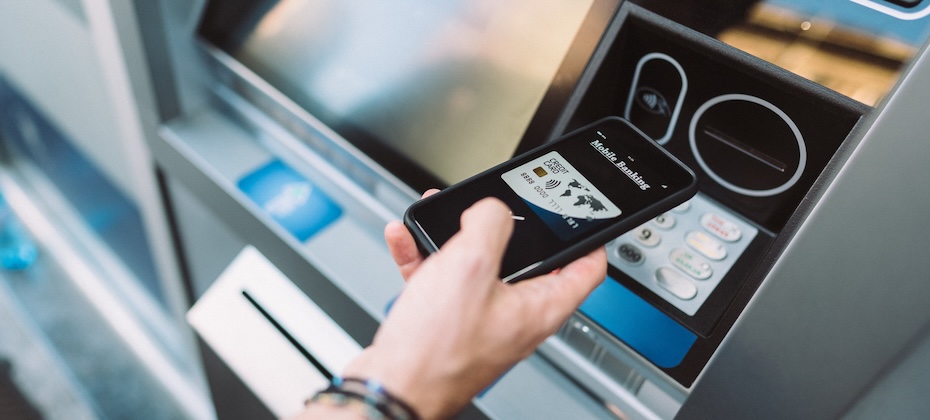Tag: Financial inclusion

As a father to two young adults, I know how important it is to educate each other on financial health and the tools available to us to improve access and opportunity. I believe strongly in the transformative impact of financial empowerment, and so does Experian. Our mission of Financial Power to All™ inspires us to create products and opportunities that help individuals achieve their financial goals. Consumer debt is at an all-time high, according to the New York Federal Reserve which reported that total household debt increased by $93 billion in the fourth quarter of 2024 to $18.04 trillion. Debt can be a significant barrier to financial stability and success, limiting opportunities, creating stress, and hindering individuals from reaching their full potential. Recognizing these challenges, Experian is partnering with ForgiveCo, a Public Benefit Corporation (PBC), to manage the acquisition and cancellation of $5 million dollars in qualifying consumer debt for over 5,000 families in Louisiana, one of the poorest states in the United States. Having spent my childhood summers in Louisiana, I have personally seen the impact debt can have on families. Breaking down one of the barriers to financial empowerment is one of the reasons this program is so important to me. As part of the program, we are excited to be teaming up with Louisiana State University (LSU) star athlete Flau’Jae Johnson to reach more consumers and make a bigger impact with this program, forgiving an additional $100K for every LSU women's basketball win during the college basketball tournament. A star athlete with NIL deals, she knows the importance of managing finances and has a passion for reaching young adults with financial empowerment messages. She has been involved in other programs with us and is a great partner. This is just one of many initiatives to help consumers and our commitment to financial empowerment extends beyond debt relief. We evolve our educational resources and products to better support the millions of members we serve, as well as underserved communities. Some of our other activities include the creation of the B.A.L.L. for Life™ initiative that connects African American and Hispanic youth with financial education, supporting scholarships for Asian Americans through the Ascend organization, providing custom resources for Out & Equal and Born This Way Foundation for the LGBTQ+ community, supporting the NextGen Innovation Lab for Disability:IN, and sponsoring credit counseling for the military community with Operation HOPE. To learn more, visit our website or hear directly from Flau’Jae below. Related Posts

Amid some of the financial challenges that underserved communities experience, members across the financial services community remain committed to championing initiatives and programs that drive greater financial inclusion. In fact, collaboration has led to the inclusion of non-debt related payment information on consumers’ credit profiles, as well as digital services that make it easier to manage money. These efforts have helped to broaden access to fair and affordable financial resources for more individuals. While significant progress has been made, there is still more work to do. However, some of the misconceptions and myths about the financial services community are hindering further advancement. Debunking these myths will accelerate progress by building trust between the financial services community and consumers. Person withdrawing money from ATM contactless Myth #1: “Financial institutions have no interest in underserved consumers or credit invisibles.” The truth is, banks and credit unions want to say “yes” to more prospective borrowers, including individuals and families from underserved communities. Beyond being the right thing to do, it’s an opportunity to potentially build lifelong relationships with a relatively untapped market. A show of good faith to communities who have largely been ignored by the financial system could lead to customer loyalty that may extend to their family and friends. That’s why participants across the financial ecosystem have been proponents of including expanded data sources—such as on-time telecom, utility and video streaming service payments—on to consumer credit reports, as well as exploring other Fair Credit Reporting Act (FCRA)-regulated data sources, including payment data on short-term small dollar loans and expanded public records data. Making this data more accessible to lenders provides a more comprehensive view of a consumer’s ability and willingness to repay outstanding debt—an actionable solution to extending credit to consumers without lenders taking on additional risk. Myth #2: “There is a lack of trustworthy financial education resources.” The financial services community and affiliated organizations recognize that empowering people with financial knowledge and skillset are critical to consumers’ financial success. In fact, banks and credit unions are partnering with nonprofits and non-governmental organizations to better understand the unique challenges and opportunities within specific communities and provide relevant tools and resources. For example, Experian’s B.A.L.L. for Life (Be A Legacy Leader) program, launched in partnership with the National Urban League, serves as a catalyst for engaging with Black communities and low-income youth through live events and digital financial education. Subject matter experts, professional athletes, celebrities, and other influencers share their experiences and expertise, covering topics such as banking, credit, financial management and investing. In addition, to help people improve their financial management, Experian partners with the National Foundation for Credit Counseling (NFCC). The NFCC connects consumers with certified financial counselors to help them address various pain points, including debt management, homeownership, student loans or small business cash flow issues. Myth #3: “Underserved communities have few opportunities to build credit and enter the mainstream financial system.” People from underserved communities, as well as younger consumers and recent immigrants are often excluded from the mainstream financial system because they lack an extensive credit history. Historically, it’s created a vicious cycle; in order to get credit, you have to have credit. Fortunately, there has been a sea change in innovative solutions to address the specific needs of these populations. These include new credit scoring models and microfinancing which provide financial services to individuals who may have been excluded from traditional banking systems. In addition, by incorporating expanded data sources, such as telecom, utility and residential rental payments onto credit reports, lenders have more visibility into consumers who may have been excluded by traditional credit scoring methods.These programs help individuals and families from underserved communities establish and build a credit history that could enable loans, or the ability to rent an apartment or open their dream business. An example is Experian Boost®, a free feature that allows Experian members to contribute their history of making utility, cellphone, insurance, residential rent and video streaming service payments directly into their Experian credit profile. By incorporating nontraditional credit data like paying utility bills on time, online banking transactions, rental payments and verified income data, more people can establish a credit profile that can potentially qualify them for a loan. More Inclusion, Fewer Myths It’s encouraging that community organizations and banks are beginning to see the economic and social benefits of aligning on financial literacy and inclusion. As more initiatives come online, underserved populations will be able to establish a better financial foundation. Then, we can declare the myths to be history.